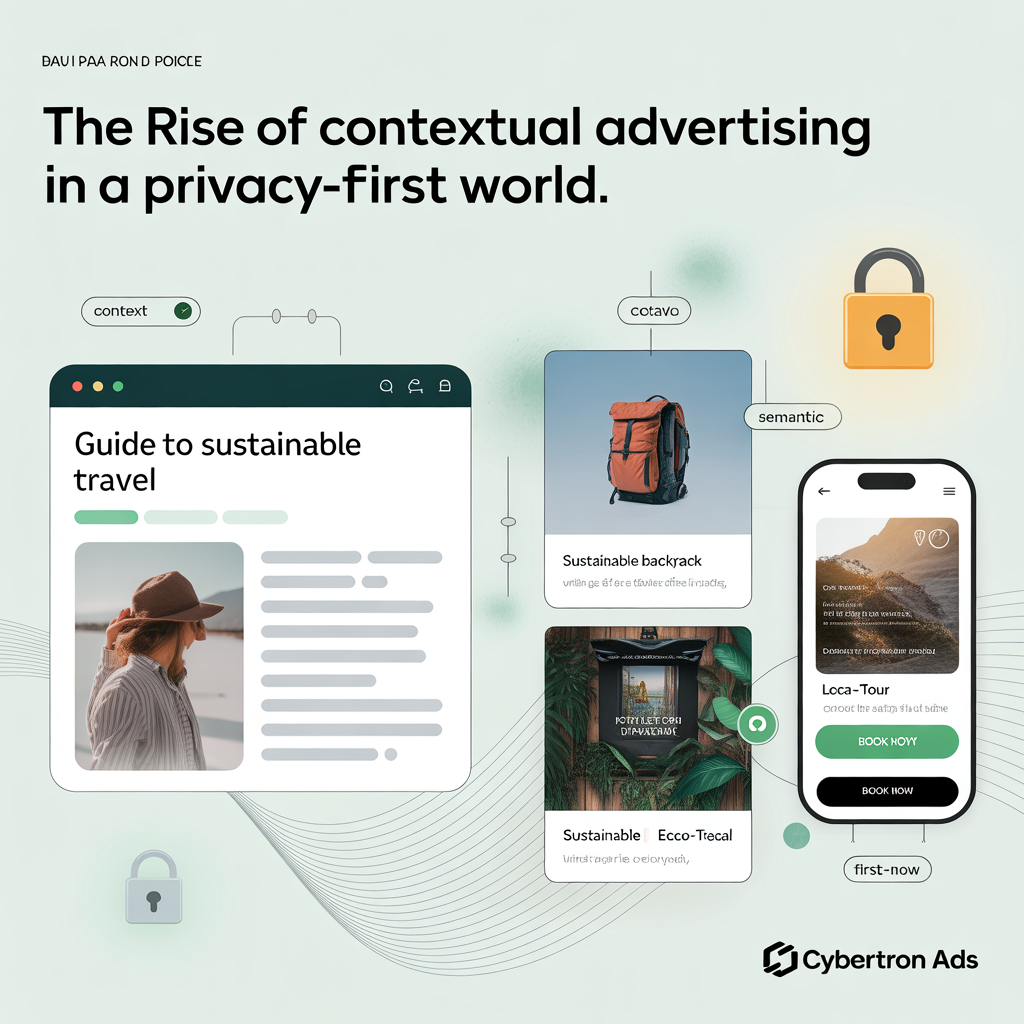Estimated read: 3–5 minutes
Privacy changes are rewriting the rules of digital advertising. As third-party cookies fade and consumer expectations for data protection grow, marketers are rediscovering an old truth: context matters. Contextual advertising — placing ads where the page content, tone, or topic matches the creative — is no longer a fallback. It’s a strategic advantage.
Here’s why contextual is back, how it works today, and how brands can adopt it without losing scale or performance.

Why contextual is resurging
Three forces are driving the comeback:
- Privacy regulations and platform changes. With browsers curbing third-party cookies and platforms tightening tracking, behavioral targeting faces limits. Contextual targeting doesn’t rely on personal identifiers; it uses the page or environment as the signal — inherently privacy-friendly.
- Audience skepticism. Consumers are increasingly wary of ads that feel intrusive or stalked. Ads that match the content a person is already consuming feel helpful rather than creepy.
- Better technology. Modern natural language processing (NLP), image analysis, and semantic classification let advertisers understand page meaning at scale — not just keywords but tone, sentiment, and intent. That sophistication makes contextual precise again.
What modern contextual looks like
Contextual advertising today goes beyond simple keyword placement. Leading implementations layer multiple signals:
- Semantic context: Understanding the article’s true topic, sentiment and subtext (e.g., “eco travel tips” vs. generic “travel”).
- Visual context: Analyzing images on the page so an ad about hiking shows next to photos of trails, not just the word “walk.”
- Moment signals: Time of day, device type, and local events to tune relevance (e.g., meal deals around lunchtime).
- Audience intent overlays: First-party signals (site behavior, CRM segments) can be combined with context for safe personalization without third-party cookies.
The result: ads that feel natural and useful because they match what the person is already reading, watching, or searching.
Real-world wins (examples & logic)
- Quick contextual hijack: When an unexpected event happens — a power outage at a live event, for example — brands that respond with on-topic creative earn outsized social lift. Contextual creative becomes culturally resonant because it’s timely and relevant.
- Content alignment: A sports shoe brand advertising next to training guides or local race coverage will see higher engagement and better brand recall than when its banner runs randomly across unrelated pages.
- Programmatic contextual at scale: Publishers and platforms now offer contextual segments (e.g., “sustainable parenting,” “small business finance”) that allow programmatic buys to target meaningful environments without personal data.

How to deploy contextual effectively (tactical playbook)
- Map meaningful environments. Identify the top 5 contexts where your message naturally fits (e.g., product reviews, how-to guides, local events).
- Create context-first creative. Tailor headlines and visuals that echo the environment — product-in-use images, instructional captions, or local callouts.
- Use semantic classification, not keywords. Work with partners who analyze full page meaning and sentiment, not just keyword matches, to avoid mismatches.
- Combine with first-party signals. Where possible, layer contextual placements with your own data (logged-in behavior, CRM segments) to increase relevance while staying privacy-safe.
- Test for outcomes, not only clicks. Measure recall, time-on-page, conversions, and downstream value. Contextual often shows higher viewability and better brand metrics even with lower short-term CTRs.
- Automate & refresh creative. Use dynamic creative to adjust messaging per context (e.g., different hero image for product reviews vs. listicles).
Common pitfalls and how to avoid them
- Overly broad context segments. “Sports” is too wide — narrow to subtopics and sentiment.
- Generic creative. Contextual requires more thoughtful, subtle creative that complements the content.
- Ignoring measurement. Track brand lift, assisted conversions, and viewability to prove value.
- Assuming all publishers are equal. Evaluate contextual accuracy and traffic quality per partner.
Quick pilot (30–60 day checklist)
- Select 3 high-value contexts to test.
- Produce 2 creative variants per context (context-matched vs. generic).
- Run paired tests (contextual placements vs. behavioral placements if possible).
- Measure engagement, recall, viewability, and conversion.
- Scale the winners and document learnings for creative playbooks.
Why brands should act now
Contextual advertising solves a pressing problem: how to stay relevant and measurable in a privacy-conscious world. It preserves scale, reduces reliance on fragile identifiers, and — when done well — improves consumer experience. For advertisers, context is both a compliance strategy and a performance strategy.
Cybertron Ads helps brands design contextual strategies that combine semantic intelligence, creative adaptation, and programmatic delivery. Want to pilot a contextual campaign tailored to your audience and market? Book a meeting with us or read the full playbook on press.cybertronads.com.
